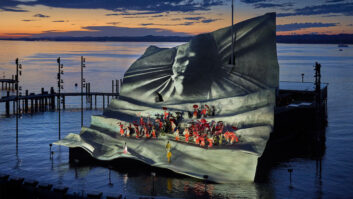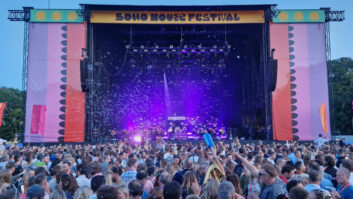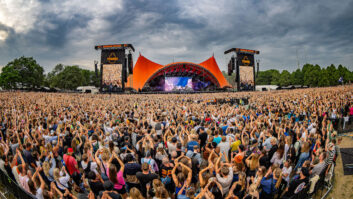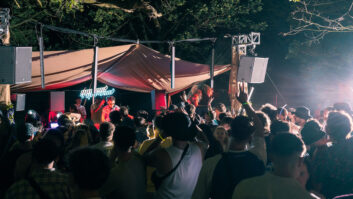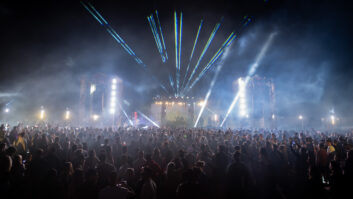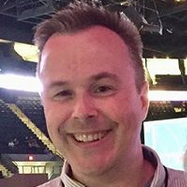
In the U.S., we love massive festivals, but Coachella, Bonnaroo, Outside Lands and the rest really only caught on in the last two decades. In truth, our festival history pales against that of Europe and the UK, where such annual blowouts have been a summertime staple since the 1970s.
There’s generations of music fans over there who can’t remember life without festivals—take my cousin Jemima, who makes a point of hitting three or four a year. While one happens to be held only a few hundred feet from her backyard (Boardmasters in Cornwall), Glastonbury remains her all-time favorite, though she’s been known to travel halfway around the world to try one out: “At Glasto, it normally rains and you’re wearing wellies for seven days straight, walking around a five-mile-big festival with blisters and mud—that’s exhausting work. Coachella was grass and heat, so I thought I would give it a go, plus it’s one of the biggest music festivals in America and it used to be classed as the American Glastonbury. Which it’s not. The fact you are penned in a certain drinking area and can’t drink while watching a band or DJ or whatever? Don’t know what that’s about.”
Since they’re such an ingrained part of culture over there, festivals—and all their supporting industries, including audio vendors—have weathered ups and downs throughout the decades. Here in the U.S., however, after nearly two decades of growth, we’re only starting to see festivals on a downward trend for the first time.
The U.S. touring industry welcomed the advent of festivals with open arms in the early 2000s. With the record industry in freefall at the time, there were fewer new acts being minted that could fill sheds and stadiums, and the aging Baby Boomer acts that were regularly among the highest-grossing live acts every year were getting on in years. Were live shows going to dry up forever? Then festivals started springing up, providing win-wins for all involved—consumers got a good ROI on a ticket, promoters made money, acts at all levels got exposure to huge audiences, and sound companies and other production vendors kept working.
Fast forward to 2018 and the top-grossing tours are still mostly aging baby boomers, but now we’ve started to experience festival fatigue. Lollapalooza saw slow ticket sales this year, according to the Chicago Tribune, while Bonnaroo had its worst and third-worst attendances ever in 2016 and 2017, according to the Tennessean. Some long-running mainstays like Sasquatch have gone on hiatus, while others like FYF Fest and Lost Lake threw in the towel this year due to low ticket sales. In September, St. Louis’ LouFest cancelled due to money issues just 48 hours before showtime, bringing to an end an eight-year run that had a strong attendance history, selling out all 60,000 tickets just last year.
Why is attendance down? There’s no single answer. Music fans who attended the earliest post-2000s festivals are now aging out of regular concertgoing, with priorities shifting toward raising families and so on. Most of the biggest festivals are now owned by the same promoters, resulting in a creeping sameness to the lineups, too. Pitchfork found that Lollapalooza, Coachella and Bonnaroo had about a third of their lineups in common in 2017. And then there’s the theory that millennials’ much-discussed focus on experiences may mean they’re ready to experience … something else.
All industries experience lulls, and then reinvention comes along. Some suggest the U.S. should embrace the growing European trend of small, almost artisanal festivals, like Croatia’s Love International fest profiled on page 36. Some fests are adopting that format here, like Portland, OR’s Pickathon, which caps tickets at 3,500 daily and adds a decidedly American twist by turning it into a weekend-long live music video shoot with an audience on 12 heavily art-directed stages, resulting in hundreds of individual clips released throughout the year online for an additional revenue stream. By all reports, this year’s edition was a smashing success. For years, the sound industry has crowed “live music will never die because you can’t download an experience”—but now people want to experience the creation of the live music download.


